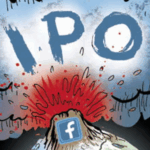 Often, a question doesn’t have an easy answer in the digital advertising business. This is a column devoted to an answer to a single question or topic – and providing a bit of space for it.
Often, a question doesn’t have an easy answer in the digital advertising business. This is a column devoted to an answer to a single question or topic – and providing a bit of space for it.
Today’s participant is Dave Morgan, who is CEO of Simulmedia, an ad technology company focused on the addressable television market. He recently answered a series of questions about the future of display in a conversation with AdExchanger.com…
AdExchanger.com: You’ve started Tacoda, Real Media (which later merged with 24/7 Media) and been deep in the display ad space. What do you think is going to happen with display in the future?
DM: [To preface] for the last three years, I’ve spent almost no time around display advertising. But someone asked me recently what I thought about the future of display advertising and I used it as a moment to reflect.
I tried to think of what the next five to seven years holds and, “What things are certain in display advertising” -which led to “We’re going to see more page views and more impressions.”
And then, “Where’s that growth going to be?” –which led to “Five or so years ago Facebook had zero impressions and today it represents almost 30 percent of the page views in the United States – and outside of the United States too.”
I don’t see that slowing down as a network effect. In the next five to seven years, Facebook is going to represent more than half of the web page views on the Web.
Then I thought about advertising. Let’s just say that web display advertising today is $13-14 billion annually in the United States. We probably think that in the next five, six years that’s going to grow to $25 billion. An $11-12 billion increase.
Today, Facebook represents about $1.5 billion of that. In five years, where’s Facebook going to grow? Most people think that in five or six years Facebook is going to grow to a 10 billion dollar advertising company. If you control something between 30 to 50 percent of the Web’s pages, you can expect your business to grow [similarly], particularly because media has a U‑shaped pricing curve.
It significantly advantages either companies with massive scale or really tight, very valuable, niche audiences. If you don’t have a lot of scale you start coming down in the U. But you come down very fast. If you’re a tweener, you have very low per unit value.
Then if you’re very niche-y, like high‑end business to business, you can be very valuable.
If you look at auction‑driven advertising, which drives searching, which is driving more and more display these days, it’s even more the case. You’re going to get much more money for an object if you can sell it at Sotheby’s typically, then if you sell it at Christie’s, because Sotheby’s has more people, more bidders. This is how Google beat Overture.
They had significantly more bidders. They could monetize at twice the price and ultimately it broke the business. You can look at Yahoo search advertising revenue relative to it. There was a time when Overture and Google were relatively similar. If I look at display and I say, “What’s going to happen?” I’m like, ” Facebook has scale orders of magnitude over others.”
If you believe that also advertising is going to be driven by data, user data and targeting, then they’re going to be able to do things that nobody else will do. They have certainly, better identity data than anybody. If I put those things together, and if you think that all of display is going to grow 10 or 12 billion in the next five, six years. And you think Facebook is going to grow 9, 10, 11 billion, then it’s pretty clear that all of the display growth in the market goes to Facebook.
OK. But, retargeting is very popular in display now. The use of first‑party data, by retailers seems very important for example. How does this get translated in a future, Facebook world?
Facebook obviously controls all of the display advertising on its own page views, which will be by far the largest audience, with the most time spent. It’s also going to be able to leverage that and be able to control display advertising off of Facebook. Not unlike what Google’s able to do today, where it may not link all of the data. And it may not link all of the searches today to ads that are delivered through the DoubleClick system on other sites. But certainly that capacity is there.
Now that Facebook distributes things like “likes,” you can imagine that Facebook is not only going to be able to control all of the revenue on its own sites, but it can control advertising on a lot of other sites. The big will get bigger.
If I look at web display advertising, it seems to me that what we’ll call the free web, the non‑Facebook web, is in five or six years going to be the same size as the Facebook web. Which means Facebook owns virtually all the market growth, which means everybody that’s left on the other side is going to be fighting. Which is more companies, more technologies, more data. It’s going to be a frantic fight to do anything to hold market share.
If you look within that ecosystem, I’ve got to believe Google is going to grow in display, because they have such control of technology and data. They also have scale. Then if I look past that, it doesn’t look that good.
Yahoo! still has a lot of scale and is quite profitable in its advertising business, but it’s going to get squeezed for sure. I don’t know where AOL and MSN play. I don’t know where the virtual publishers play, except certainly it’s going to bring pricing down.
Because we’re going to see a lot of competition, it means you’re going to have to run your businesses at a very low cost. And you’re going to have to have some ways to get some unique, data‑driven revenue that’s going to give you some pricing power that you don’t have today.
I hadn’t really thought about [display’s future] until someone asked me. The point is even if it’s wrong by 50 percent, if Facebook owns 50 percent of the growth in the market, it means that there’s a massive squeeze put on the rest of the marketplace.
Terry Kawaja’s ecosystem slide gets squeezed and Facebook fills up half of that picture. And it owns it end to end. It will own all the infrastructure, all the technology. The companies that are fighting today for 85 or 90 percent of the market are, in five or six years, going to be all fighting for 50 percent of the display market.
Do you see a Facebook ad network, external to Facebook?
I don’t think they need one, but at some point when they want more growth they will eventually have one. But they don’t need one today. Certainly there are massive amounts of growth on their own property. And you don’t need to grow elsewhere and share the revenue. Why not keep all of the revenue? They have massive amounts of pages and time spent, and it’s not being monetized today on their own site.
How do you think they’re going to incentivize the publishers – such as news publishers – to start publishing on Facebook?
Anyone that’s delivering news, information or advertising to web audiences has to be on Facebook. The audience is too big, the experience is too robust and certainly will be too robust to miss in a couple of years. I think they’re going to incent them the exact same way they incented Mark Pincus and Zynga to build on Facebook. You pay us basically 30 percent of your revenue and you’re going to have access to the world’s largest and most robust media audience and sets of tools to communicate with them.
If you think about it, there are a lot of advantages being able to operate there because once you’ve built it, you can gain a lot of network effects that mean you don’t have to spend as much money on the acquisition of audiences. So when Facebook is launching new games, it doesn’t cost nearly as much as it used to cost because they’re able to plug right into that same audience.
So if you’re a movie studio and you’re trying to deliver on‑demand streaming movies, once you’ve got some customers on Facebook, as long as you’re willing to share with them whatever that revenue piece is negotiated, then you can keep coming back and back.
You can imagine social viewing of streaming movies – so social Netflix for your Facebook. Social music for your Facebook, social news through your Facebook. If I was in the content business I’d be pouring so much of my focus into trying to understand how to build businesses on Facebook because it’s still wide open. It’s sort of like Oklahoma and the Sooners; it’s like just go!
Zuckerberg has opened the gates and said, “Look, we want people to come in and homestead.” He’s shown with Zynga that there’s a way to build very compatible and mutually beneficial business models.
How is the New York Times going to survive in a Facebook world?
I think all of the things that they’re doing ‑ it doesn’t have to necessarily be mutually exclusive with non‑Facebook initiatives. But they should be able to build products that are unique to Facebook.
The Times clearly understands social because they have a lot of social tools built into their own website. But their own website has just a few percent of the scale of Facebook. I’d rather be someone that has 100 times more scale.
Can Google somehow offset the Facebook tidal wave?
I think they’re going to have to essentially buy and own audience real estate.
Content is the answer. I know they and Facebook talk about being technology companies, and there’s nothing wrong with that – newspaper companies are great publishing and distribution companies – but they’re media companies.
Now Google and Facebook might think that that will create issues with a lot of partners, but they don’t need those partners. I think it means getting really serious about what is Google News? What is Google Finance? What is Google Sports?
They’re certainly doing that with YouTube. They basically own a lot of content produced by others. Now they’re financing a lot of the YouTube content. Maybe that’s going to be their bet. They certainly have an advantage right now with YouTube.
But if Facebook gets really serious about a video strategy, you can imagine they could surpass YouTube pretty quickly, too.
Follow Dave Morgan (@davemorgannyc) and AdExchanger.com (@adexchanger) on Twitter.













